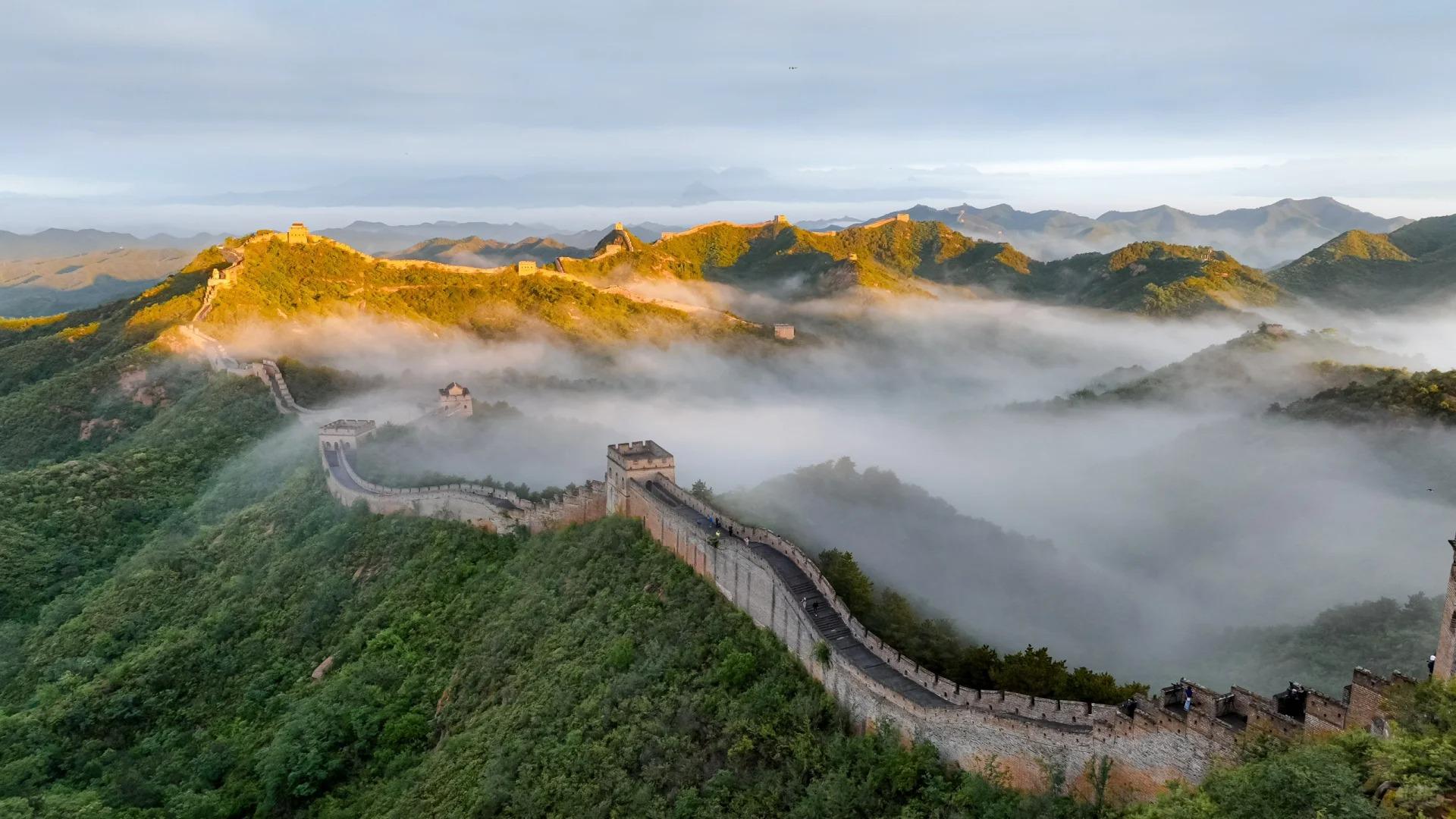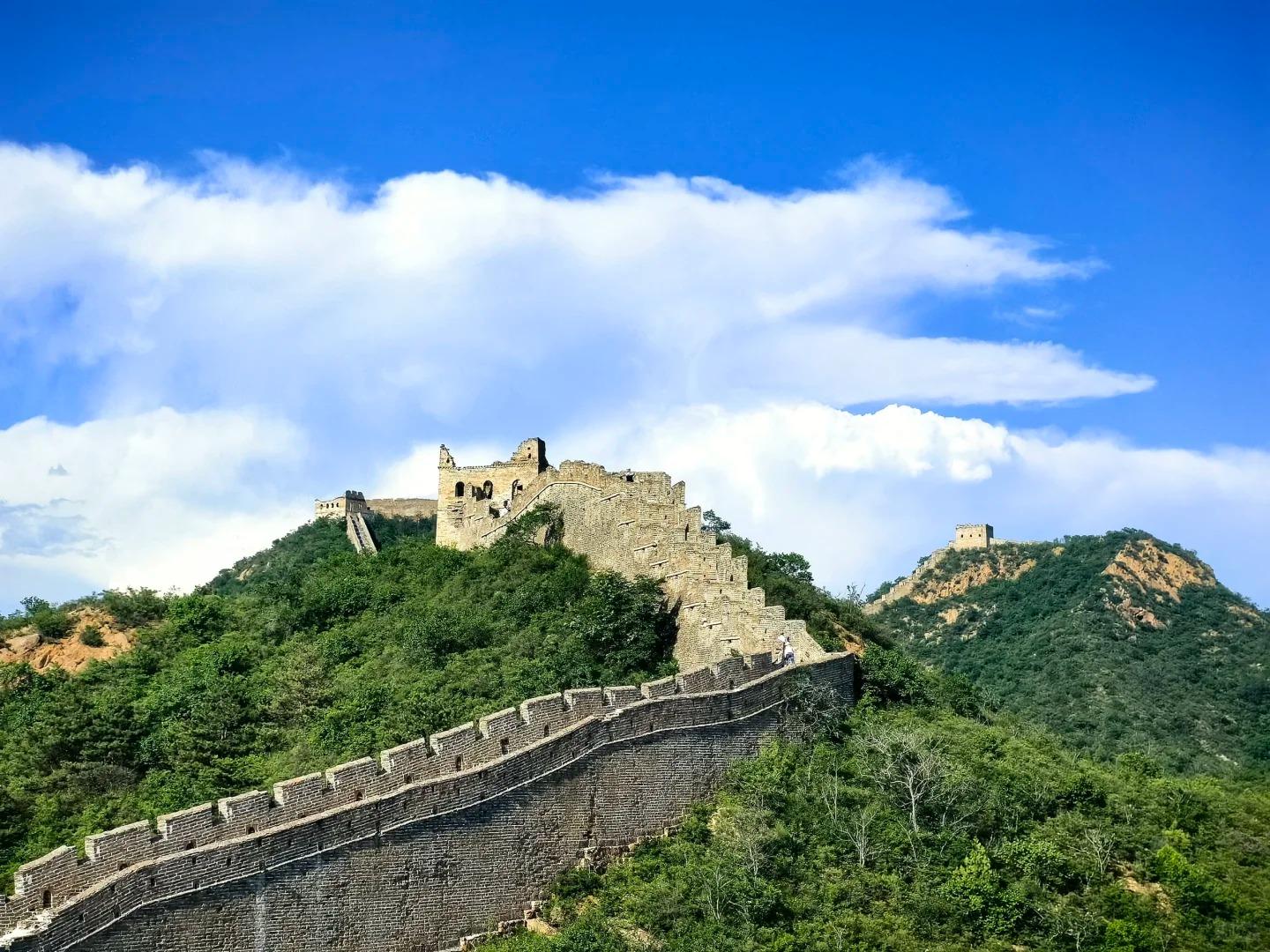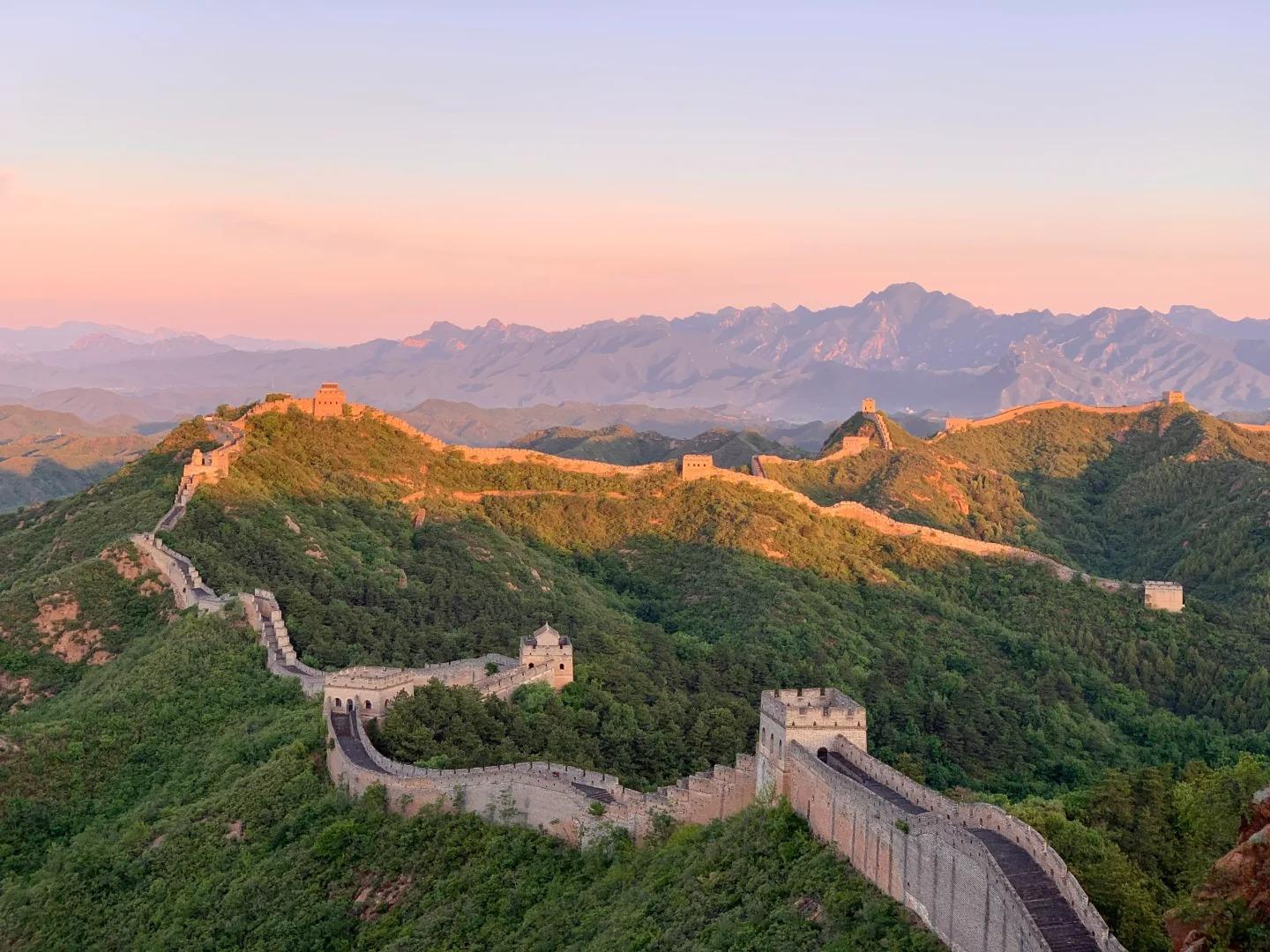Visiting Information
| Information | Details |
|---|---|
| Chinese Name | 金山岭长城 (Jīnshānlǐng Chángchéng) |
| Location and Address | Jinshanling Village, Luanping County, Chengde City, Hebei Province, China |
| Opening Time/Hours | April to October: 6:00 AM – 6:00 PM November to March: 7:00 AM – 5:00 PM |
| Entrance Fee | Peak Season (April to October): CNY 65 Off-Season (November to March): CNY 55 Cable car (optional): CNY 40 (single trip), CNY 60 (round trip) |
| How to Get There | From Beijing: By Bus: Take the direct tourist bus from Dongzhimen Outer Street By Car: About 2.5 hours drive from Beijing city center By Taxi: Available but expensive, around CNY 600-800 one way (No metro service available to Jinshanling) |
| Best Time for Visit | Spring (April to May) and Autumn (September to October) for comfortable weather and beautiful scenery |
| Contact Info | Tel: +86 314 7502001 Email: [email protected] |
Overview
Jinshanling Great Wall is a section of the Great Wall of China located in Luanping County, Hebei Province, about 130 kilometers northeast of Beijing. Known for its well-preserved original features and breathtaking scenery, Jinshanling is considered one of the most beautiful and photogenic sections of the Great Wall. It stretches for about 10.5 kilometers, with 5 passes, 67 watchtowers, and 3 beacon towers. The wall here combines the characteristics of both the Ming Dynasty and the earlier Qi State period, making it a valuable site for studying the evolution of the Great Wall.
Historical Background
The Jinshanling section of the Great Wall was initially built during the Ming Dynasty in 1368. It was further fortified and expanded in 1567 under the supervision of General Qi Jiguang, a renowned military leader of the time. The purpose was to strengthen Beijing’s northeastern defenses against Mongol invasions. The name “Jinshanling” comes from the nearby mountains that resemble a range of mountains made of gold when the sun shines on them. Over the centuries, this section has witnessed numerous battles and has played a crucial role in China’s defense strategy. Today, it stands as a testament to ancient Chinese engineering and military architecture.
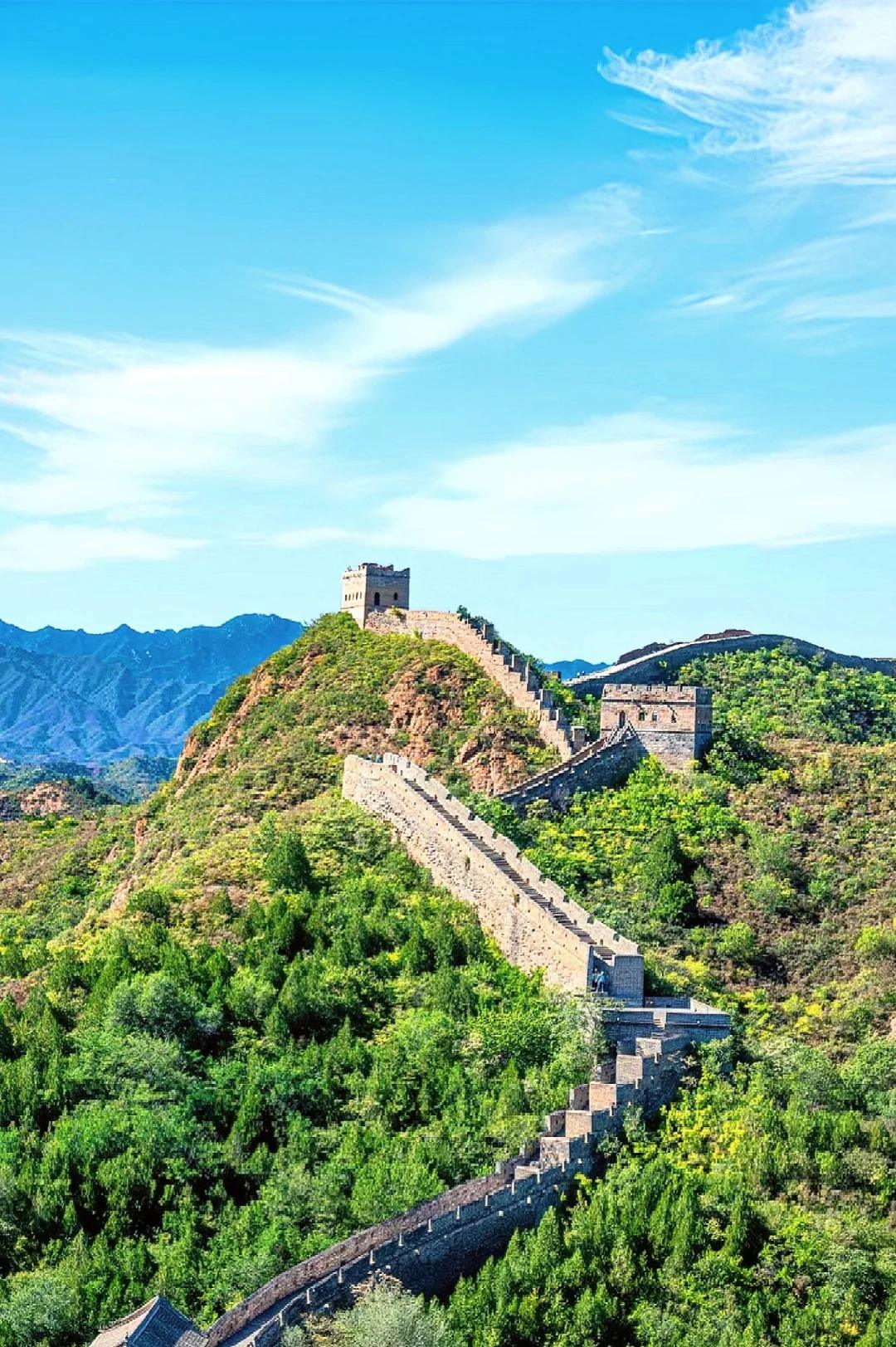
Architectural Features
- Watchtowers: Jinshanling features 67 watchtowers, each with unique designs and functions. Some are two-storied, while others have three levels. These towers were used for surveillance, signaling, and as temporary barracks for soldiers. The intricate brick and stone work on these towers showcases the advanced construction techniques of the Ming Dynasty.
- Wall Structure: The wall at Jinshanling is primarily made of brick and stone, with rammed earth as the core. It’s wider at the base and narrows towards the top, a design that enhances stability. The wall’s height varies from 5 to 8 meters, and its width ranges from 4 to 5 meters at the base.
- Beacon Towers: Three beacon towers stand along this section, used for signaling and communication. These towers were crucial in the wall’s defensive system, allowing rapid transmission of messages along the wall’s length.
- Passes: Jinshanling has five passes, which are fortified gateways through the wall. These passes were strategic points for controlling movement and trade along the wall. Each pass has its unique architectural features and historical significance.
- Crenellations and Parapets: The top of the wall features crenellations and parapets, which provided protection for defenders while allowing them to observe and shoot at attackers. These features are well-preserved in many sections of Jinshanling.
Cultural Importance
Jinshanling Great Wall holds significant cultural importance as it represents a crucial part of Chinese history and engineering achievement. It symbolizes the ingenuity, perseverance, and collective effort of the Chinese people in ancient times. The wall serves as a physical reminder of China’s past conflicts and its determination to protect its civilization. As one of the best-preserved sections of the Great Wall, Jinshanling provides valuable insights into ancient Chinese military strategies, architectural techniques, and daily life of soldiers stationed along the wall. It’s not just a military fortification but also a cultural bridge, having facilitated exchanges between different ethnic groups and civilizations throughout history. Today, it continues to be a source of national pride and a symbol of China’s long and rich cultural heritage.
Surrounding Attractions
- Simatai Great Wall: Located just east of Jinshanling, Simatai is another spectacular section of the Great Wall known for its steepness and unique architecture. A hike from Jinshanling to Simatai offers one of the most challenging and rewarding Great Wall experiences.
- Gubeikou Great Wall: To the west of Jinshanling, Gubeikou is a more rugged and less restored section of the wall. It offers a rawer, more authentic Great Wall experience and is rich in military history.
- Panjiakou Reservoir: About 60 kilometers from Jinshanling, this reservoir is famous for its “underwater Great Wall” – a section of the wall submerged when the reservoir was created. Boat tours are available to view this unique sight.
- Chengde Mountain Resort: Located in Chengde city, about 130 kilometers from Jinshanling, this UNESCO World Heritage site was a summer palace used by Qing Dynasty emperors. It features a vast complex of imperial gardens, temples, and palaces.
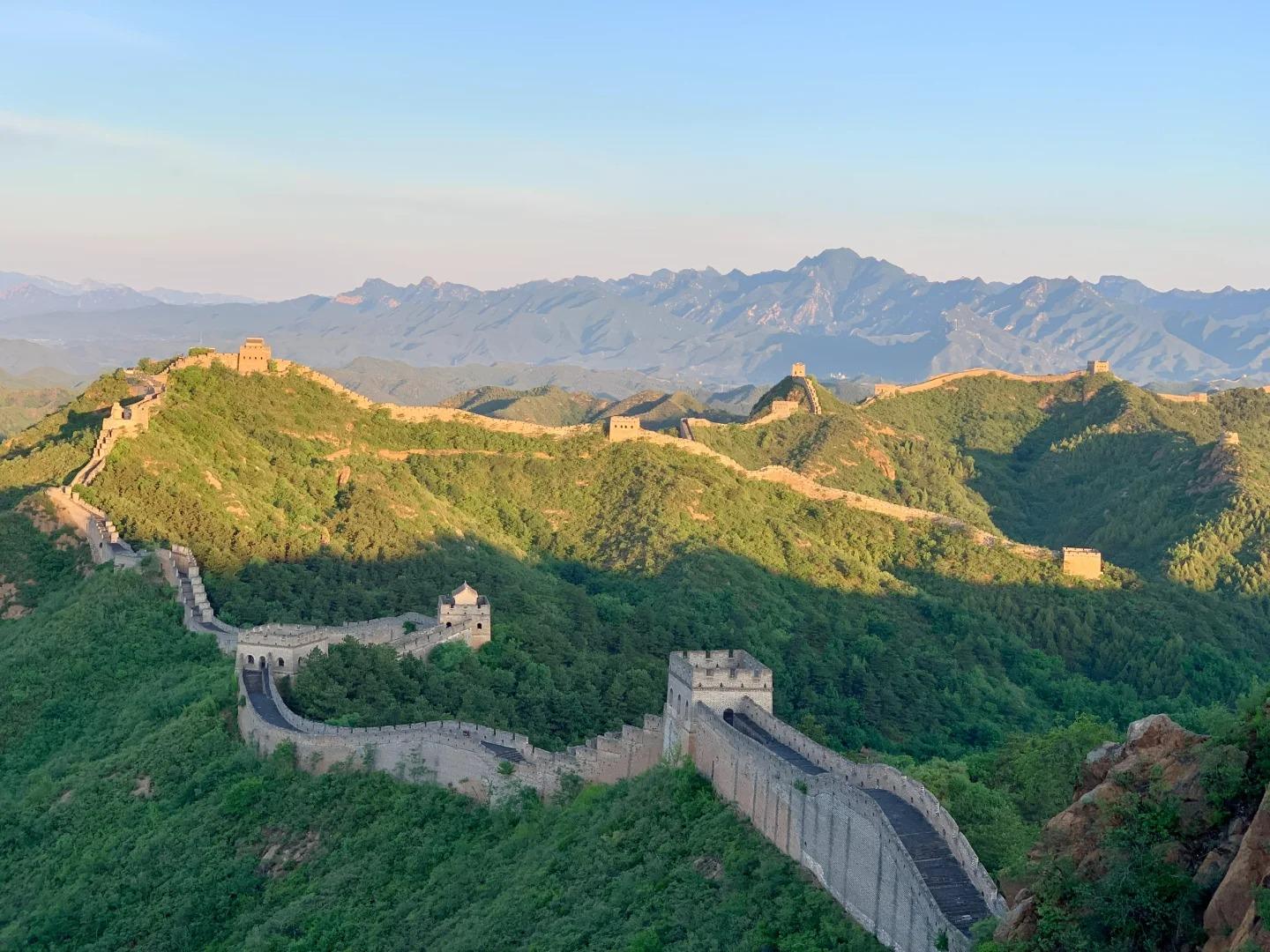
Photography Opportunities
- Sunrise and Sunset Views: The East Five-Window Tower at Jinshanling is a popular spot for capturing stunning sunrise views. The golden light illuminating the undulating wall as it stretches into the distance creates breathtaking images. Similarly, sunset views from various points along the wall offer spectacular photo opportunities.
- Panoramic Vistas: Several vantage points along the Jinshanling section offer sweeping views of the wall snaking across the mountainous landscape. These spots are perfect for capturing the grandeur and scale of the Great Wall.
- Architectural Details: The well-preserved watchtowers, with their intricate brickwork and unique designs, provide excellent subjects for detail-oriented photography. Capture the textures of the ancient stones and the interplay of light and shadow within the towers.
- Seasonal Variations: Each season offers unique photographic opportunities at Jinshanling. Spring brings misty mornings and blooming flowers, summer offers lush green landscapes, autumn paints the surroundings in vibrant colors, and winter often covers the wall in a blanket of snow, creating a serene, almost surreal landscape.
- Night Photography: On clear nights, especially during full moons, the wall takes on a mystical quality. Long-exposure shots can capture the wall under starry skies, creating ethereal images that showcase the timeless nature of this ancient structure.
Modern Importance
- Cultural Heritage Preservation: Jinshanling serves as a prime example of cultural heritage preservation in China. The efforts to maintain this section in its original state while making it accessible to visitors demonstrate China’s commitment to protecting its historical landmarks.
- Tourism and Economic Development: As one of the most popular sections of the Great Wall, Jinshanling plays a significant role in China’s tourism industry. It attracts visitors from around the world, contributing to the local and national economy. The development of tourism infrastructure around Jinshanling has also brought economic opportunities to the local communities.
- Educational Value: Jinshanling provides an invaluable educational resource for students, historians, and researchers. Its well-preserved state offers insights into ancient Chinese military architecture, engineering techniques, and historical events, making it a living classroom for understanding China’s past.
- Environmental Conservation: The preservation of Jinshanling has led to increased efforts in environmental conservation in the surrounding areas. Maintaining the natural beauty of the landscape has become integral to preserving the overall experience of visiting this section of the Great Wall.
- National Identity and Pride: Like other sections of the Great Wall, Jinshanling continues to be a symbol of Chinese civilization and national identity. It serves as a source of pride for Chinese people and a representation of China’s long history and cultural achievements to the international community.
FAQ
- What is the Jinshanling Great Wall famous for?
The Jinshanling Great Wall is famous for its well-preserved original features, stunning mountain scenery, and being one of the most photogenic sections of the Great Wall of China. - What’s inside the Jinshanling Great Wall?
The Jinshanling Great Wall features 5 passes, 67 watchtowers, 3 beacon towers, and stretches for about 10.5 kilometers. Visitors can explore these structures and enjoy panoramic views of the surrounding landscape. - Is the Jinshanling Great Wall free?
No, the Jinshanling Great Wall is not free. There is an entrance fee that varies depending on the season, with additional costs for optional services like the cable car. - Is the Jinshanling Great Wall worth visiting?
Yes, the Jinshanling Great Wall is generally considered worth visiting for its authentic architecture, breathtaking views, and less crowded environment compared to some other sections of the Great Wall. - What to do in the Jinshanling Great Wall?
At the Jinshanling Great Wall, you can hike along the wall, explore watchtowers, take photographs, enjoy panoramic views, and even camp overnight in designated areas (with prior arrangement). - How do I get to the Jinshanling Great Wall in the local city?
From Beijing, you can take a direct tourist bus from Dongzhimen Outer Street to Jinshanling. Alternatively, you can drive or take a taxi, which takes about 2.5 hours from Beijing city center. - How to visit the Jinshanling Great Wall?
To visit the Jinshanling Great Wall, arrive at the entrance, purchase tickets, and then you can either hike up or take the cable car. It’s recommended to allow at least 3-4 hours for the visit. Wear comfortable shoes and bring water, as the hike can be strenuous in some parts.


